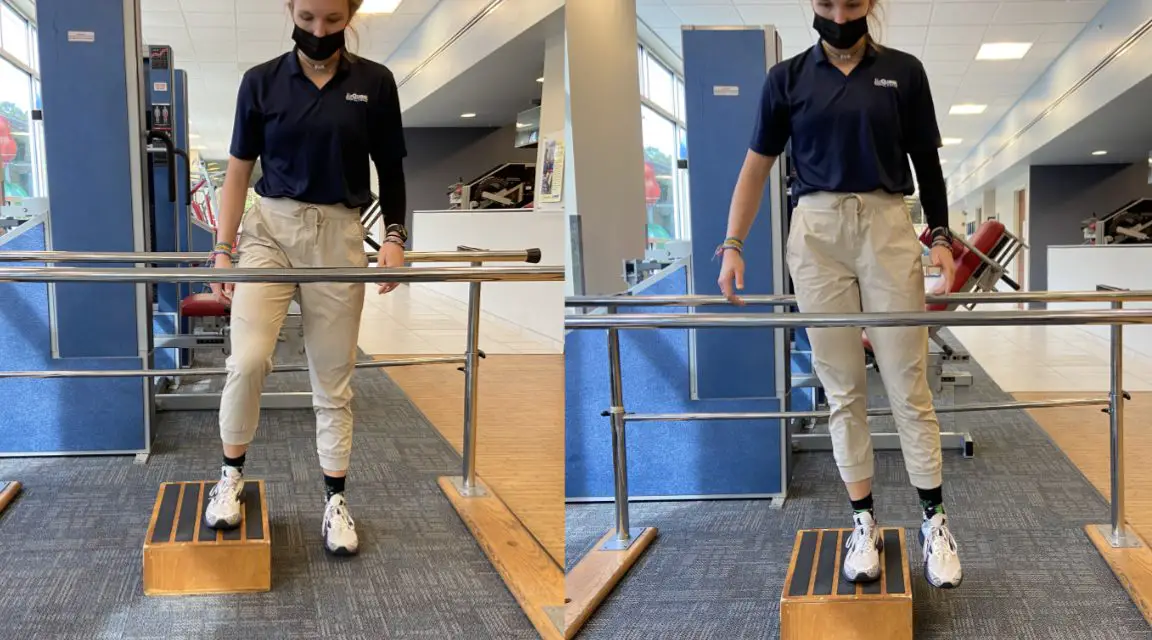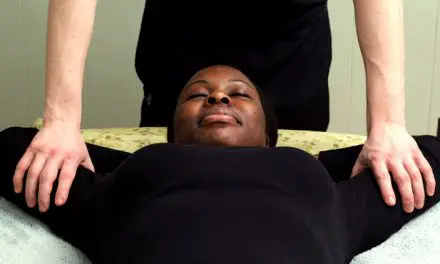I remember a client from a few years ago who told me that he had chronic hip pain and low back pain for almost a year, and his physical therapist had told him that it’s likely because his left leg is “longer” than the other leg. His previous massage therapist attempted to “correct” his leg length discrepancy by doing several bouts of hip and knee traction and stretching, which actually made his pain worse.
As I listened to his story, taking note of the way he spoke and his body language, I wonder if his pain was more than just a leg length issue.
Like most types of pain, many factors contribute to how we perceive and respond to it. For example, my client may worry that his leg length discrepancy may prevent him from hiking and golfing. He might worry that his pain won’t go away, which interferes with his job and disrupts his sleep quality.
Given what we know about the biopsychosocial model of pain (BPS), leg length discrepancy may not be a big contributor to pain for some people, just like various types of postures that many therapists blame to be a major cause of chronic pain. And here’s why.
What is leg length discrepancy?
Leg length discrepancy is where one leg is or appears to be longer than the other, and it’s caused by various factors. It is classified into two types: anatomical and functional.
Anatomical leg length discrepancy
Anatomical leg length discrepancy is the actual “bony asymmetry between the level of the femur head and the calcaneus,” which can be caused by genetics (e.g. dysgenetic syndromes, phocomelia), disease (e.g. dysplasia, septic arthritis, osteomyelitis), or injuries (e.g. fractures), according to Murray et al. In other words, one leg bone is actually shorter than another.
Functional leg length discrepancy
This type refers to the “unilateral asymmetry of the lower extremity” without the shortening of the leg bones. Thus, functional leg length discrepancy can be caused by certain movement patterns, such as walking and running. For example, pronation in one foot while walking may cause one leg to be a bit shorter than the other leg.
Environmental factors could be another cause, such running or hiking regularly on an uneven trail for a long period of time. While such leg length discrepancies can be developed during childhood or adulthood, do you need to fix them?
How common is leg length discrepancy?
About 2 out of 100,000 people has leg-length discrepancy, at least in France in the mid-1980s. Based on data from a whopping 2.68 million French sample in 1987, about 1 in 1,000 people use some sort of correctives for their leg length discrepancy.
A 2005 review published in Chiropractic and Osteopathy estimated that most people with leg length discrepancy have a 9-millimeter difference or less, based on a sample population of more than 1,600 people. Fewer than seven percent have more than a 14-millimeter difference. There’s no difference between the subjects’ gender and height.
The researchers concluded that such differences are “not likely to cause symptoms requiring treatment.”
Dr. Gary A. Knutson, who is the author of the 2005 review and a practicing chiropractor in Bloomington, Indiana, identified pelvic torsion in the sagittal and frontal planes as a primary effect of leg length discrepancy.
“Mechanically, in the standing position, the weight of the body in the pelvis induces a force vector through the hip joints and towards the feet. With asymmetry of the leg lengths, the pelvis, being pushed down on the femoral heads, must rotate or torsion,” he wrote.
Such compensation is even more obvious among those with greater leg length discrepancy up to two centimeters, which often causes subjects to stand with a “contrapposto” like an ancient Roman statue.
However, other factors could contribute to pelvic torsion, such as asymmetry of the pelvic bones and the degree of movement of the sacroiliac joint, and we cannot reliably tell how much leg length discrepancy someone has by examining pelvic tilts and X-rays or using tape measurement.
“The problem is conflating anatomic leg length discrepancy, which is true leg-length inequality, with putatitve functional or physiological leg length discrepancy, which is the appearance of leg length inequality caused by a physiologic dysfunction, most likely involving muscles and pelvic torsion. How these differing types of leg-length inequality may overlap and cause pain and dysfunction,” Dr. Knutson told Massage & Fitness Magazine in an email interview.
“Most manual therapists recognize functional leg length discrepancy as a real phenomenon. However, since it has yet to be validated, we cannot be sure, and many consider functional leg length discrepancy to be a phantom, a figment of our imaginations.
“I get that, and there are some smart people working on methods to validate this phenomenon. However, until this is done, functional leg length discrepancy is not considered when some in the health or research professions look at the problem of leg length discrepancy.”
Dr. Knutson also pointed out that leg length discrepancy are often measured visually, which may have errors such as a “badly-aligned X-ray.” This error can be mistaken for anatomical factors rather than functional.
Can leg length discrepancy cause back pain?
Short answer: maybe. It depends on many factors, including joint pathologies, stress, age, and gender.
Patients and clients who have leg length discrepancy and lateral pelvic tilts often have one side of their torso “scrunched” up, which is easily seen by an extra fold of skin on the side of the abdomen. While it may look uncomfortable, the evidence about leg length discrepancy and pain is quite mixed.
Dr. Knutson found a large range of leg length discrepancy—5 to 30 millimeters—that could be associated with chronic low back pain. However, the consensus is not so much about the leg length difference, but it’s more about how much load is placed upon the lower body and for how long.
Although subjects with greater leg length discrepancy (10 millimeters or greater) reported having low back pain more than those with less discrepancy (18% of 1,309 subjects), Dr. Knutson pooled data from 164 asymptomatic subjects and found that about 15% of this sample had leg length discrepancy of 10 millimeters or greater.
So there’s a fairly equal number of people with similar discrepancies but have no back pain.’ This raises the question of why this specific population reported no pain.
Another study of 247 subjects no difference in reports of low back pain with a leg-length discrepancy of 10–20 millimeters.
A few studies also found no significant correlation between leg length discrepancy and back pain among adults with huge leg length discrepancies since childhood.
One study from Finland had 81 subjects with an average of 12 millimeters of leg length discrepancy found that most of them had not reported any low back pain during the average time of 35 years.
Another study of 23 young adults with an average of 29 millimeters also found no back pain complaints.
Even among amputees who had their lower leg amputated, there were no differences in leg length discrepancy between those with low back pain and those without.
However, the sample is tiny (9 with pain, 8 without) so the effect size may be negligible. Still, this study raised questions whether leg length discrepancy is significant enough to contribute low back pain.

Many amputees with leg length discrepancy suffer from no back pain. (Photo: Sean Kimmons, U.S. Air Force)
How much leg length discrepancy is normal?
This is a complicated answer because both research and clinical anecdotes find a variety of measurements among those with and without back or hip pain and leg length discrepancy. And so, what is considered “normal” for one person may not be so for another.
“First, some people are more flexible than others—like children—and their body can adapt to the anatomic inequality. The body seems to be able to compensate for relatively small amounts of true anatomic inequality,” Dr. Knutson explained. “Second, pain can be the result of a functional or physiologic inequality and not anatomic. Thus, anatomic leg-length inequality may be present, but the pain is the result of functional leg length discrepancy pathophysiology, not the result of the anatomical leg length discrepancy.
“When there is pain involved in the kinetic chain, leg-length inequality is often poorly measured, and that measurement gives no distinction between anatomic and functional leg length discrepancy. So, what is a functional problem is often blamed on an anatomic one, and vice-versa.”
Another reason why many clinicians believe that leg length discrepancy is a strong factor in contributing to back pain is because of their training, education, and way of thinking.
“Why does the back hurt? I was taught [it’s because of] herniated discs, atrophied muscles, lifting improperly, sacral torsions…I could go on. But we know now that pain is more complicated than anatomy most of the time,” said Dr. Sarah Haag, who is a physical therapist at Entropy Physiotherapy and Wellness in Chicago, Ill. “We know that most of us are ‘asymmetrical’, and if we take the time to really listen to people’s symptoms, their back pain didn’t start when they were walking as children.
“How would even a ‘significant’ leg length difference all of the sudden be the linchpin to solving a person’s back pain? Spoiler alert: It doesn’t.
“People can have really crazy deformities and NOT have pain. Pain is a multi-factorial, personal experience of a person. If it were as simple as correcting a leg-length inequality, we’d have solved the most expensive and debilitating healthcare issue in the world.”
While Dr. Knutson’s review found hardly any evidence that there is a strong relationship between leg length discrepancy and back pain, some recent research reported otherwise.
An Australian study found a strong correlation between leg length discrepancy and degenerative disc disease in the hip and low lumbar spine, which may be a source of low back pain.
Among the 255 subjects studied (121 women, 134 men), middle-age men with leg length discrepancy reported higher incident of pain than matching women. Among the latter, there were not much difference between those with leg length discrepancy and without. However, younger men and women with leg length discrepancy reported more pain than those with no such difference.
But like in Knutson’s review, the authors suggested, “This correlation is consistent with the notion that abnormal or excessive joint loading, as occurs in the hip joint and lumbar spinal joints as a result of [leg length discrepancy}, may predispose these to the development of [degenerative disc disease].”
They cautioned that this sample population may not reflect on the general population since the patients were recruited from their chiropractic practices. Even though they reported a strong correlation, the study does not establish causation effect. (Remember statistics 101: Correlation does not always equate to causation.)
Another study from Finland found that those with greater than 5 millimeters had higher reports of low back pain than those with less than 5 millimeters, especially among those who had to stand for long hours at work.
However, the study design itself is quite interesting because the subjects consisted of 218 workers — 169 pork meat cutters (31 females and 138 males) who had physically demanding work, and 50 customer service workers (41 females and 9 males) who sat most of the day.
The authors admitted that small sample population, especially among the latter group, is quite small and may not accurately reflect on the general population. Also, the large difference between the number of subjects compared may not be reflect as accurately as having a closer ratio. However, like the aforementioned study, a longitudinal study is needed to determine how strong is the relationship between leg-length discrepancy and risk of low back pain.
“People can have really crazy deformities and NOT have pain. Pain is a multi-factorial, personal experience of a person. If it were as simple as correcting a leg length inequality, we’d have solved the most expensive and debilitating healthcare issue in the world.” ~ Dr. Sarah Haag
Leg length discrepancy hip pain
While most research find that people with uneven hips tend to also have higher reports of hip and knee pain, the differences between those with and without leg length discrepancy aren’t very significant.
A 2009 North Carolina study examined over 3,000 people with hip, groin, and knee pain living in various counties in rural North Carolina. The study found that 226 people with a leg length discrepancy of two millimeters or more reported more symptoms of pain than those without the discrepancy.
However, this group were more likely “to be older, have a higher mean body mass index (BMI), report symptoms most days in the knee or hip, have radiographic knee or hip [osteoarthritis], and report a history of joint problems.”
The authors stated, “Moderate-to-severe symptoms were more common in participants with [leg length discrepancy] than without [leg length discrepancy], though this was not statistically significant in either knee or hip joint. We cannot determine causality from this cross-sectional study.”
Another study with 1,430 subjects find a lack of an association between pain in the greater trochanter and leg length discrepancy. Among the 271 subjects with hip pain, 37 of them had a leg length discrepancy of one millimeter or greater while the remaining ones had no leg length discrepancy.
Should you worry about leg length discrepancy?
While it seems like leg length discrepancy is associated with pain, it should not be mistaken for a causation. Still, some therapists and trainers try to “correct” this issue with “aggressive” hands-on therapies and specific exercises. Considering the complexity of the issue, what should you ask when reading such research?
“First: how was the leg length discrepancy measured? Quantifying true anatomic leg length discrepancy is difficult. In my review paper, I only used studies that had used more accurate and reliable measuring techniques,” Dr. Knutson suggested.
“Second, was consideration given to a functional problem? Simple measures of leg-length discrepancy do not necessarily give good data on what the cause of the problem really is—that an anatomical and functional leg length discrepancy can overlap, and given the most common measurement methods, it becomes problematic—if not impossible—to delineate one cause from another. Wrong cause, wrong treatment.”
Making sense of the research altogether can be as daunting as writing a term paper, but there are solutions that you can use when you read a research paper. Dr. Haag recommends that you take a course in research literacy, whether you’re a clinician or a patient.
“I had to. And I’ve taken several of them because I still feel like I have room for improvement,” she recalled. “Always critically assess what you’ve read.”

Dr. Sarah Haag introduces the next speaker at the 2019 San Diego Pain Summit. (Photo: Nick Ng)
Dr. Haag also gave a few tips for reading scientific literature:
1. Watch out for grand claims for strong findings in the abstract or conclusions. If they make grand claims, there should be rock solid data to support them.
2. Read the methods section! Google the stats they used. Make sure they measured that they said they did, and that they used a reliable measure. Also, review the different study designs. Did the researchers choose a study design that can actually answer the question they’re posing?
3. Use a critical appraisal tool. I learned about this from Dr. Neil O’Connell! The Centre for Evidence-Based Medicine have several appraisal tools.
4. Be confident that you are still clever even if a study doesn’t make sense.
Further reading: How to Fact Check Massage Therapy Research: Six Things to Look for.
“I used to HATE reading literature,” Dr. Haag said. “I’d muddle through, be frustrated that it didn’t make sense, and at the end it would just say ‘more studies are needed.’ Sometimes the studies were poorly done. Sometimes they disagreed with the findings. I didn’t want to be the dummy so I’d just stay quiet. But knowing that you’re trying to learn more, and asking thoughtful questions to researchers and other clinicians is a fantastic way to grow your knowledge. Questioning should be encouraged!”
Given the current understanding of pain, leg length discrepancy is just a tiny piece of the each person’s pain experience, so there’s no strong evidence that this is a major cause for different types of pain.
“Hearing their story and [observe] their behavior of their pain are the keys,” Dr. Haag said. “I’ve had more patients than I can count start their story of low back pain with ‘I’ve been told I have a leg length discrepancy by my (fill in well-meaning professional/friend/relative), and that’s why I have low back pain’.
“Depending on when their pain started, how it ebbs and flows with time of day, activity, or mood are all important! If the person in front of me tells me their pain skyrockets when they don’t wear their one-centimeter heel lift, I’m not going to take that away from them. I will instead fully assess them and see if I can help them not needing that heel lift—regardless if using it improves biomechanics in some small way or if it’s just a security blanket in their shoe.”
Given our current understanding of pain and the current evidence about leg length discrepancy and pain, clinicians may likely give it too much credit for causing pain.
“In physical therapy school, I was taught to check for leg length discrepancy—complete with routines to ‘be more accurate,’ Dr. Haag added. “This included having the patient lift up their pelvis and sit it back down, then straighten their legs, then I’d grasp their ankles and traction gently. Once in the correct position, I could ‘eyeball’ it, using my dominant eye, again, for accuracy. I also learned the difference between functional leg length discrepancy and true leg length discrepancy.
“What I don’t recall learning is why all of this may matter. And if it did matter, what in the world was I going to do about it?”
While treating leg length discrepancy is beyond the scope of practice of massage therapists, massage therapy can decrease pain and stress and increase patients’ confidence in moving. Remember that pain is always contributed by multiple factors, not just one.
A native of San Diego for nearly 40 years, Nick Ng is an editor of Massage & Fitness Magazine, an online publication for manual therapists and the public who want to explore the science behind touch, pain, and exercise, and how to apply that in their hands-on practice or daily lives.
An alumni from San Diego State University with a B.A. in Graphic Communications, Nick also completed his massage therapy training at International Professional School of Bodywork in San Diego in 2014.
When he is not writing or reading, you would likely find him weightlifting at the gym, salsa dancing, or exploring new areas to walk and eat around Southern California.





